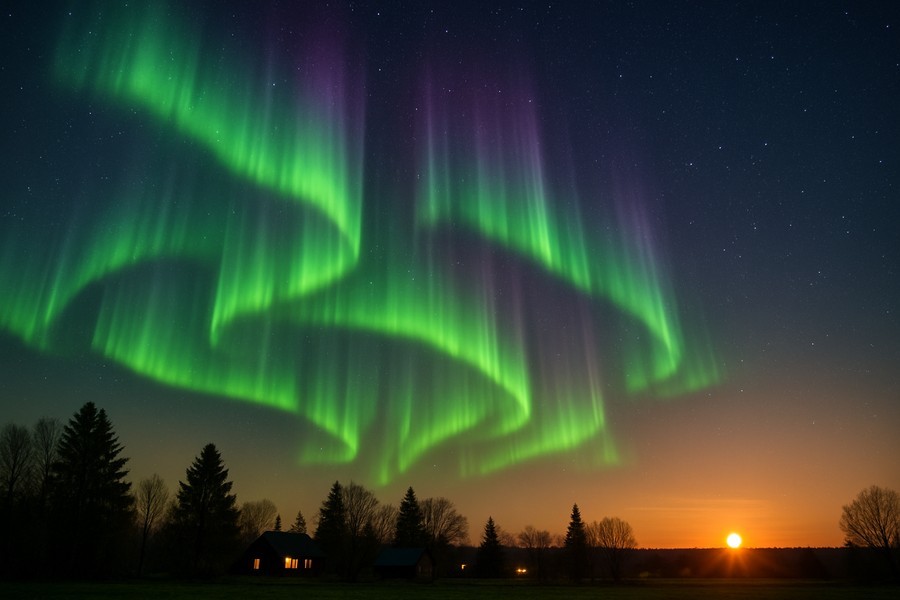
Get Ready for a Spectacular Light Show in the Sky
Earth is about to witness an amazing spectacle of three solar storms, also known as coronal mass ejections (CMEs), heading our way. These solar events could set off stunning auroras, commonly referred to as northern lights, even in areas that don't usually see them.
The CMEs originated from a region on the sun known for its sunspot activity. They're projected to reach Earth soon, based on information from a space weather forecast center.
Potential Impact and Expectations
The most intense disturbances are anticipated soon when the geomagnetic storming could reach moderate levels before subsiding to minor levels. In terms of space weather, a minor to moderate storm could bring about weak to moderate fluctuations in power grids, minor effects on satellites, and visible northern lights reaching as far as lower latitude areas.
Experts believe these effects could linger for a few days. The initial storm is anticipated to cause a "mild disturbance". However, the subsequent storms could have their effects amplified as they are closely following one another, causing them to arrive almost simultaneously.
Exciting Times for Aurora Watchers
Both the national and international weather forecast agencies anticipate the most noteworthy space weather activity to revolve around the time when the combined impact of the CMEs could set off minor to moderate geomagnetic storms. This means that the northern lights could make a brief, yet dazzling comeback for sky watchers in northern Scotland, Canada, and the northern parts of the U.S, provided the weather conditions remain favorable and the solar magnetic field tilts advantageously toward Earth.
Earth has already experienced what could be considered a "warm-up pitch" ahead of the main impacts, and is bracing for three more storms followed by a swift solar wind stream.
Unprecedented Solar Activity
There's been a surge in solar activity recently. The sunspot region from where the CMEs originated has produced several significant solar flares, one of which is associated with the current CMEs.
CMEs are gigantic eruptions of magnetized plasma from the sun that can interact with Earth's magnetic field, creating awe-inspiring auroras when charged particles clash with atmospheric gases. While these upcoming storms are expected to be moderate, their timing and clustering make them particularly exciting for those who enjoy watching the auroras.
So, keep your eyes peeled towards the night sky and your cameras fully charged. We might be in for a breathtaking spectacle!
